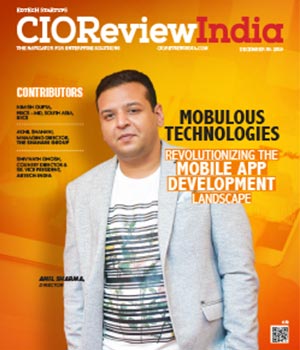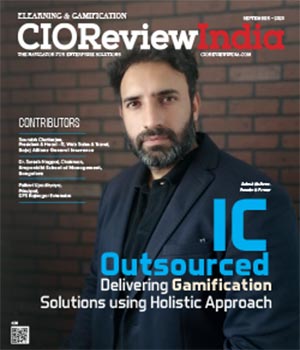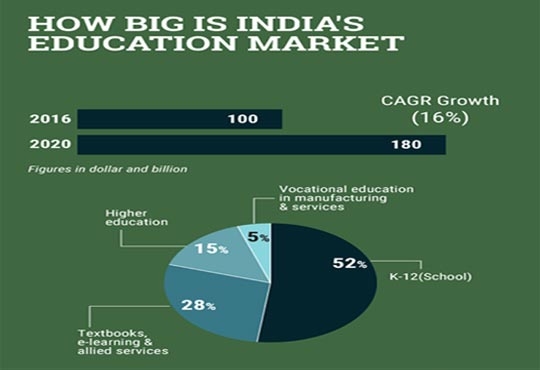
4 Different ways Innovation Is Making Education Progressive and Accessible
CIOReviewindia Team | Friday, 31 July 2020, 06:54 IST

Technology and innovation are transforming the education sector in numerous ways. Some of the changes experienced in the education sector as a result of technology and innovation include a progressive approach to learning where people and institutions have more faith in education. Education is also more accessible today than it was several years ago, thanks to technology.
The education sector is one of the industries that are slow to adapt to technology. A lot of emphasis goes to physical contact and the belief that teachers are better placed to assess students as opposed to technology. Technology is also blamed for lost creativity among students because they become too dependent on machines. However, more research and prevailing circumstances from time to time have made technology a crucial part of education going into the future.
Students today use technology to obtain high-quality and professional programming assignment help. Technology and innovation in this case make the life of a student easier. Students can focus on other topics or work on projects that demand more time and attention without missing homework submission deadlines. However, there are sectors and aspects of education that have benefitted most from innovation. Here are 4 ways in which innovation has changed the education sector.
1. Distance Learning
Students do not have to visit physical compasses to complete degrees, diplomas, and many other academic qualifications. In fact, a student enrolls for a course and completes it after 4 years or more without setting foot on campus. It reduces overhead costs for learning institutions while allowing more people to attain qualifications they would not have attained without distance learning.
Distance learning has significantly reduced the cost of education. Technology, in this case, becomes an avenue for the society to deliver equity. Previously, a student had to consider the cost of a hostel, transport, and the possibility of dropping out of work to pursue further education miles away. Technology has allowed students to attend classes in the comfort of their sitting rooms.
Availability of distance learning and the use of technology to monitor content consumption brings to fore the role of technology and innovation in making education accessible. Workers who had to take leave from work or resign can now improve their skills without losing salaries or disrupting work schedules. A student is at liberty to take the class in the morning, during the day, afternoon, or even at night because the materials will still be available.
One of the challenges with distance learning has been eliminated by advanced technological innovation. Teachers can ascertain whether a student has read through content or watched videos using artificial intelligence. AI is also helping teachers to identify areas of difficulty and develop intervention mechanisms without physical contact with the students. The challenges that existed with distance learning are, therefore, solved through advanced technological innovation.
2. Experiential Learning
Technology has made it easier for students to experience what they learn in class. Previously, students depended on field trips and experiments to have a feel of the concepts they are learning in theory. Through virtual reality technology in education, students have a more realistic feel of concepts, making them easier to understand.
The entry of virtual reality in education has made learning enjoyable and engaging. Students can observe the fusion of different elements in chemistry, for example, to form compounds. They do not have to rely on endless explanations and limited imagination. It will take the teacher and his class a shorter time to complete and comprehend a lesson.
Virtual Reality has reduced the cost of learning and enhanced the potential of the class environment. For instance, a virtual tour of space, museum, historical site, city, factory, or such learning spots makes it easier for pupils to understand the content on offer. The engaging nature and use of gadgets that the same generation is using to play make learning memorable and enjoyable. The objectives of learning are easier to achieve using technology.
3. Artificial Intelligence
Technology is no longer static. It can predict your next move and offer appropriate suggestions. For instance, it will assess your performance in a particular topic and stop you from proceeding or offer remedial content to ensure that each segment is satisfactorily covered. AI is helping teachers to identify challenging topics and concepts so that they can provide personalized solutions to address the challenge.
Artificial intelligence is also providing useful during tests to determine the best courses or specializations for different students. By assessing a progressive understanding of a particular topic, a learning institution, tutor, a career counselor can offer better guidance to a student. Technology will enable the student to avoid getting into a profession where he or she will regret it in the future.
4. Access to High-quality Global Learning Materials
Technology has enabled students to access the latest research and learning materials from all corners of the world in the shortest time. Previously, a book would take years to get to the shelf of a library. It means that students relied on outdated data and information in their learning. Today, a book can be released and used as a reference for a paper to be submitted tomorrow. Such speed in access to information makes learning easier and more meaningful.
The cost of accessing academic reference materials has also reduced significantly. A student had to budget hundreds of dollars for books and learning materials. Technology has made it easier to access digital materials instantly on the internet, some without paying a cent. Technology has made it convenient to build a database capturing all your reference materials without spending a fortune. Easier access to high-quality reference materials from all over the world improves your scholarly acumen beyond opening more opportunities for you to learn.
The future of education is in technology. More institutions are pushing students to enroll and complete most of the units only. It helps the institutions to reduce the cost of delivering education without lowering quality. On the other hand, students can access high-quality education easily, more conveniently, and at a cheaper price. Advanced innovation has made it easier and more acceptable to use technology in satisfactorily delivering educational materials.
CIO Viewpoint
Cloud Enabled Edtech Spaces Enriching Learning...
By CIOTechOutlook Team
Challenges and Issues of Online classes
By R. Chandran, Chief Information Officer, Bahwan Cybertek
Educational Technology, Digital Learning In The...
By Swati Sankhye, Chief Information Officer, MIT World Peace University
CXO Insights
Optimon: Smart Manufacturing Solutions...
By Srinivas Kallakurchi, President & Chief Strategy Officer
Education Should Be A Want And Not A Need
By Dr. Prem Das Maheshwari, Business Director, South Asia, D2L
Current Industry Trends In Education














